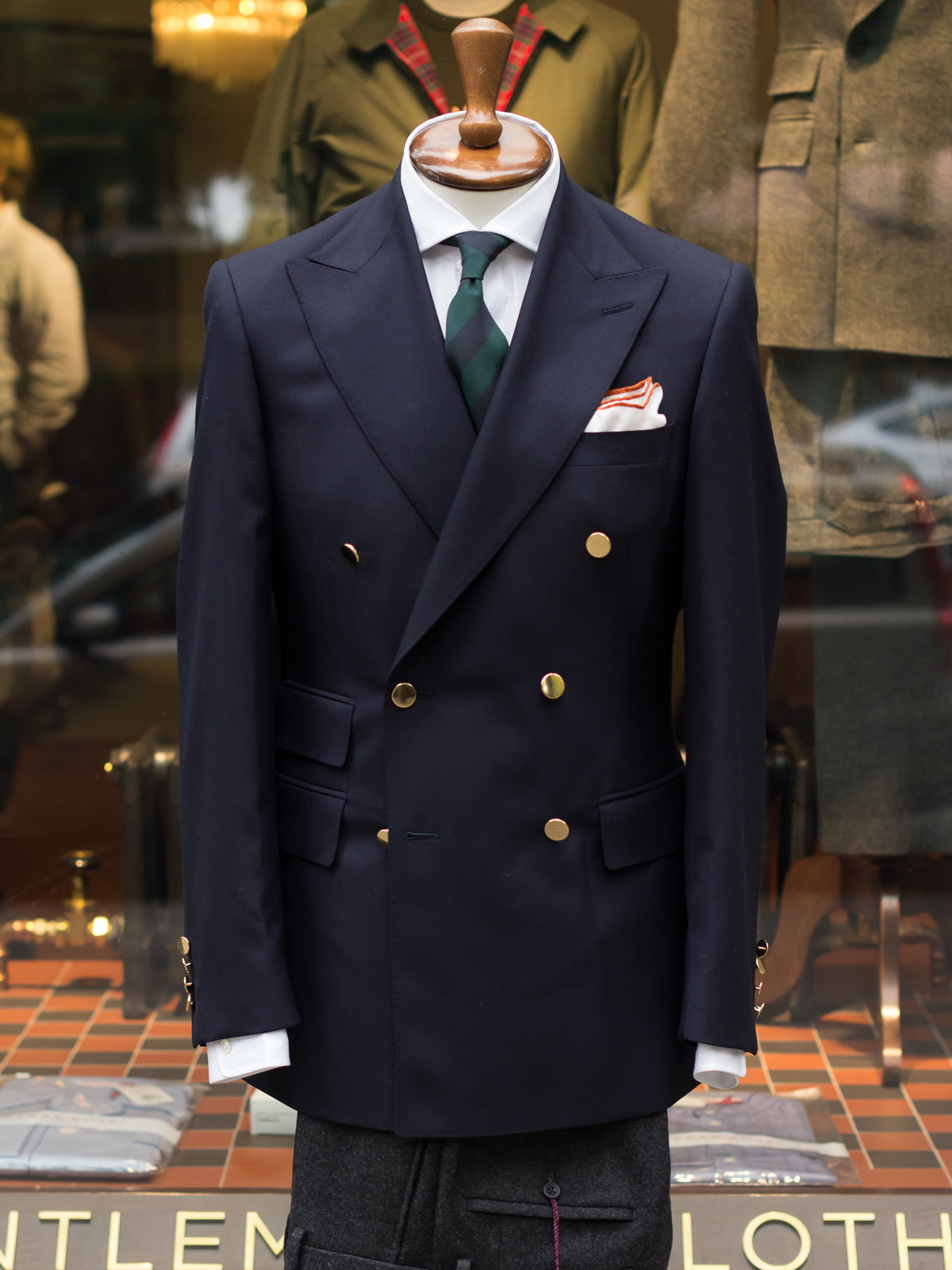Article: The Blazing Blazer

The Blazing Blazer
Firmly placed in the centre of the ever growing field of smart casual stands the blazer, and the popularity of this individual jacket seems to be eternal. Not too formal, not too casual, hardly ever out of place, almost never wrong. Dressed in a dark blue blazer with grey flannel trousers, brown brogues and a sharp white shirt and colourful tie, one may confidently think oneself dressed for whatever the day will bring.
According to many sources, the name "blazer" traces its roots from the jackets of the late nineteenth century English sports club scene, which were often decorated with bright-coloured stripes, so called "blazers". (Tradition has it pinned down to one club in particular, namely the Lady Margaret Rowing Club of S:t Johns College, Cambridge.) Others maintain that the name originates in 1837, when the crew of the frigate HMS Blazer were introduced to the jacket of this kind, in honour of a visit by Queen Victoria.
Both cannot be right – and in fact, in one regard the argument between the two seems to be wrong-headed, since it really concerns not one, but two, different articles of clothing: The double breasted blazer is the naval one. According to some, civilians with a keen interest in the navy suggested the look to their tailors, for jackets worn in outdoor settings. Others say that in fact it was the opposite – naval officers who wanted a kind of civilian version of their impressive uniforms. And although some people still refer to the double breasted blazer, with six gilt (or brass) front buttons, four sleeve buttons and flapped side pockets, as the "classic blazer", its popularity is on a steady decline, much because of its more formal, you may perhaps say stiff, image.

The single breasted one on the other hand is a garment no wardrobe can do without. Now always dark blue (except in the United States, as evidenced by the popular Brooks Brothers' bottle green version) – in its early days it could be any colour; powder blue, green, even red or yellow, and sometimes it was striped in combinations of these. And since few people nowadays belong to clubs, its brass buttons now usually bear the mark of its maker, and the club badge on the breast pocked is seldom seen.
Though the air of academic whimsy seems long since evaporated from the blazer, its air of sophistication has not. Apart for those requiring formal wear, there isn't a social context that does not embrace its understated elegance – it's sharper than a tweed jacket and more light-hearted than a suit, and it seems to welcome colour around it, as well as colourful people in it.
It is, in fact, the non plus ultra of casual smart.

